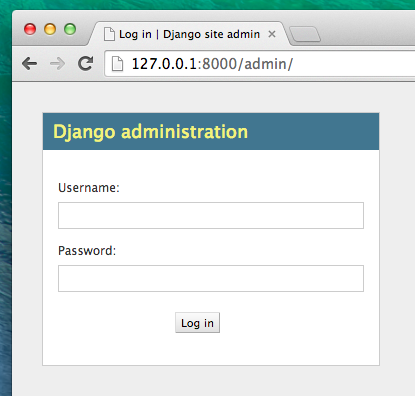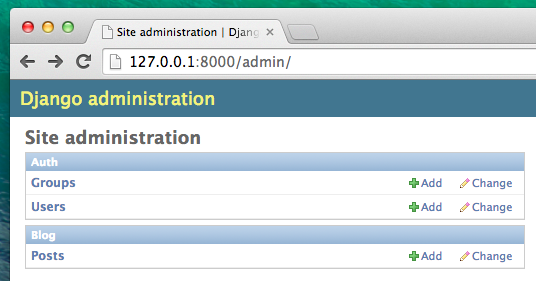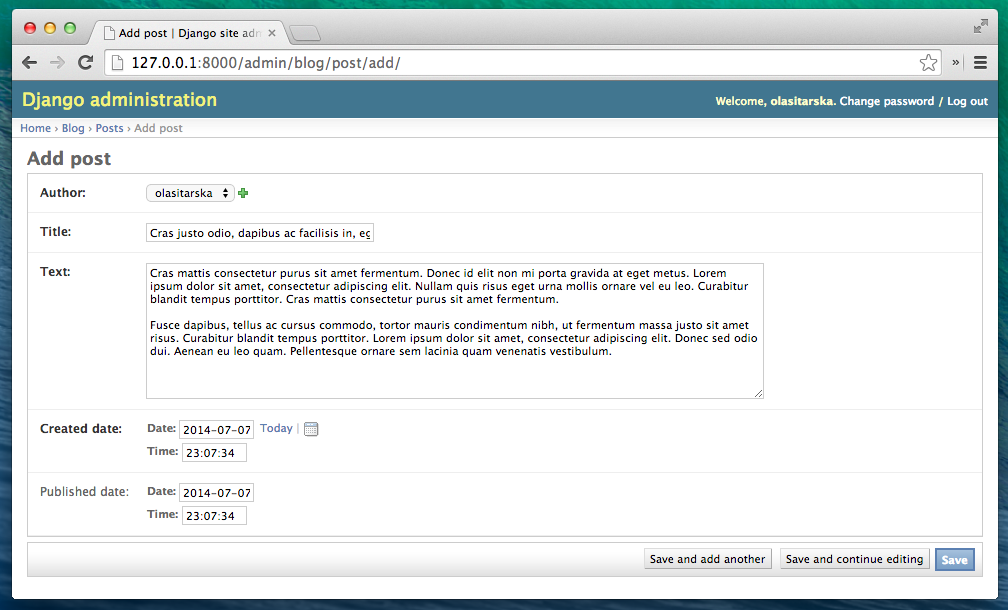- Need help? Talk to us!
- tutorial
- Introduction
- 1. Installation
- 2. How the Internet works
- 3. Introduction to command line
- 4. Python installation
- 5. Code editor
- 6. Introduction to Python
- 7. What is Django?
- 8. Django installation
- 9. Your first Django project!
- 10. Django models
- 11. Django admin
- 12. Deploy!
- 13. Django urls
- 14. Django views - time to create!
- 15. Introduction to HTML
- 16. Django ORM (Querysets)
- 17. Dynamic data in templates
- 18. Django templates
- 19. CSS - make it pretty
- 20. Template extending
- 21. Extend your application
- 22. Django Forms
- 23. What's next?
Django admin
To add, edit and delete posts we've just modeled, we will use Django admin.
Let's open the blog/admin.py file and replace its content with this:
from django.contrib import admin
from .models import Post
admin.site.register(Post)
As you can see, we import (include) the Post model defined in the previous chapter. To make our model visible on the admin page, we need to register the model with admin.site.register(Post).
OK, time to look at our Post model. Remember to run python manage.py runserver in the console to run the web server. Go to the browser and type the address http://127.0.0.1:8000/admin/ You will see a login page like this:

To log in, you need to create a superuser - a user which has control over everything on the site. Go back to the command-line and type python manage.py createsuperuser, and press enter. When prompted, type your username (lowercase, no spaces), email address, and password. Don't worry that you can't see the password you're typing in - that's how it's supposed to be. Just type it in and press enter to continue. The output should look like this (where username and email should be your own ones):
(myvenv) ~/djangogirls$ python manage.py createsuperuser
Username: admin
Email address: [email protected]
Password:
Password (again):
Superuser created successfully.
Return to your browser. Log in with the superuser's credentials you chose; you should see the Django admin dashboard.

Go to Posts and experiment a little bit with it. Add five or six blog posts. Don't worry about the content - you can simply copy-paste some text from this tutorial to save time :).
Make sure that at least two or three posts (but not all) have the publish date set. It will be helpful later.

If you want to know more about Django admin, you should check Django's documentation: https://docs.djangoproject.com/en/1.8/ref/contrib/admin/
This is probably a good moment to grab a coffee (or tea) or something to eat to re-energise yourself. You created your first Django model - you deserve a little timeout!